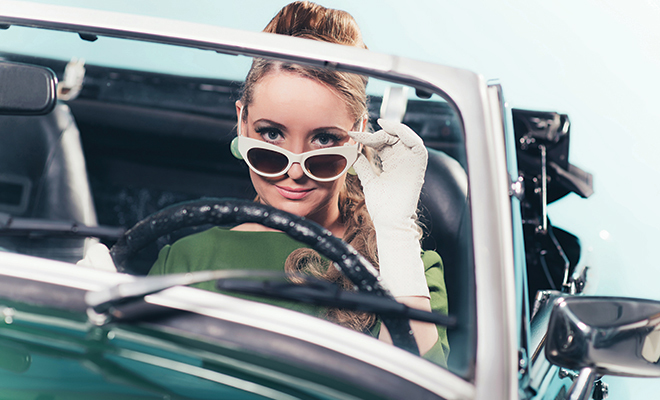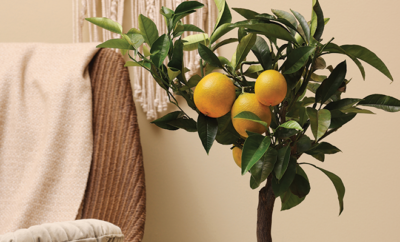
Finding gold: vintage designer sunglasses
Sunglasses have always been the accessory that is both functional and fashionable. Originally made trendy by celebrities wearing eyewear as protection from the bright lights on movie sets and to hide their personal identity in public, the history of sunglasses actually dates back to prehistoric times.
Inuit people wore flattened walrus ivory with narrow slits and the 12th-century Chinese wore flat panes of smoky quartz to help block the sun. Fast-forwarding to the 1920s and 1930s, sunglasses became mass produced during this time. In 1938, Life Magazine called sunglasses a “new fad for wear on city streets…a favorite affectation of thousands of women all over the U.S.”
Beyond their initial practicality, sunglasses have become a staple in fashion. Each decade embraced a shape and style that became iconic over time. Knowing the evolution of sunglasses can aid a collector in finding the perfect vintage designer pair today. Buying vintage signifies purchasing an item that maintains high quality, durability and cultural relevance. Here’s an understanding of style by decade.
1950s
The cat-eye shape swept the nation due to Marilyn Monroe’s celebrity. Through Monroe’s movie roles and personal fame, the cat eye became the iconic shape of the time period. Another well-known shape of the time period was the Wayfarer. Originating with the popular brand Ray-Ban®, it gained recognition from being worn on television and in movies by Kim Novak and James Dean.
1960s
Manufacturers focused on well-designed features and practicality during this time. Emphasizing usefulness, Neostyle, Persol and Ray-Ban produced sunglasses centered on protecting the eye. Through celebrity, the bold, bug-eyed sunglasses in both circle and square shapes became the shape of the decade. Former first lady and fashion icon Jacqueline Kennedy Onassis’s statement shades made her a pivotal style icon of this period.
1970s
The style of the ’70s included fading lenses and frames that were either big, plastic, wire or rimless. Celebrities sporting these during this period include Diane Keaton and Jane Fonda. This decade’s innovative development of plastic lenses made eyewear lighter. The earlier decades used glass lenses making for a heavier, less functional product. The most important modernization in the ’70s was the invention of the material Optyl, a light yet solid plastic, by Wilhelm Anger. Renowned designers such as Dior, Carrera, Dunhill and P. Picasso had their sunglasses manufactured in the Optyl works of Wilhelm Anger in Austria. Most of these designers’ vintage sunglasses wear the Optyl signature and “Made in Austria” on the inside.
1980s
More brands recognized the profitability of producing sunglasses in the ’80s. Designers such as Bugatti, Cartier, Colani, Jaguar, Lacoste and Porsche developed a portion of their business around the fashionable eyewear. Optyl expanded, opening further works in Austria, Canada, France and Germany, and the combination of design and quality reached a peak during this decade. Although the Optyl material innovation began to take over a large portion of designers during this time, there remained a few designers that continued with the original mineral-glazed glass, believing it to be of the highest quality; these include Zeiss, Ray-Ban and Persol. Celebrity style influencers during this decade include Princess Diana, who regularly wore white sunglasses by Gucci, Jimmy Choo and Dior.
1990s
The ’90s style segued to smaller lenses and wiry frames. TITANflex was the revolution of the time. With form memory, the material bends itself mechanically back into the original shape even when deformed. This development created a more flexible and elastic frame for glasses. Female trendsetters during the ’90s include the Olsen twins, Britney Spears and the women of the sitcom Friends. The small colored lenses and wire frames became the style staple of the decade.
Acquiring vintage sunglasses means buying a limited, high-quality product. Here are a few tips for purchasing vintage sunglasses.
• Online shops for purchasing vintage sunglasses include Rare Eyewear, Vintageous and Fifties Frames. You can also check your local vintage shops, or even your grandmother’s attic.
• When purchasing vintage sunglasses online, know the shop’s return policy. Sunglasses sit on your face; not being able to try them on to make sure they fit like a glove on the bridge of your nose means you will need a flexible return policy.
• Know the difference between retro compared to vintage. Retro means reflecting on a past period. Finding a retro pair of sunglasses means the eyewear is a reproduction based on the design of former classics. Retro sunglasses will embody the desired iconic vintage style but they are not original. The traditional definition of vintage specifies an item at least 25 years old. Thus, vintage sunglasses are old and original.
• Check for discoloration if you are buying plastic frames. Discoloration can be a sign that the frames have dried out over time.
• Vintage sunglasses, like vintage clothing, tend to run smaller than contemporary eyewear. Be prepared for a tighter fit. HLM
Sources: marieclaire.com, rookiemag.com and vintage-sunglasses-shop.com.







